Suillus weaverae – Butterball Bolete

The butterball bolete (Suillus weaverae) is an edible mushroom that fruits summer-fall. It is often one of the first boletes to fruit. The mushroom has an orange-brown, slippery cap and small glandular dots on the stem. The cap may develop a patchwork pattern as it ages. The pore surface is white at first, becoming yellow […]
Strobilomyces sp. – Old Man of the Woods
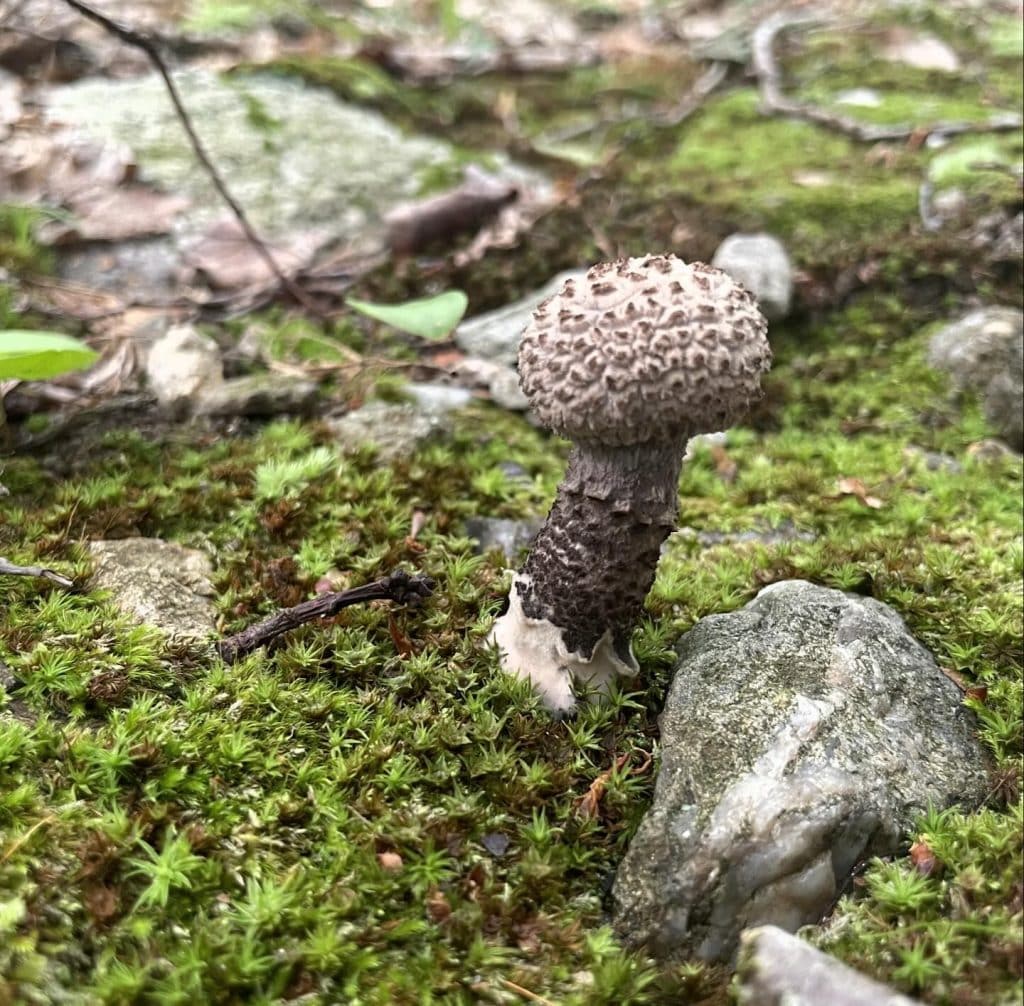
The Old Man of the Woods (Strobilomyces sp.) is an edible mushroom that fruits June-October. It can be found growing singularly or clustered in mixed hardwood or conifer forests. The cap and stem are gray to black and shaggy. Pores start off white, then turn gray and eventually black with age. Flesh turns reddish when […]
Suillus spraguei – Painted Suillus
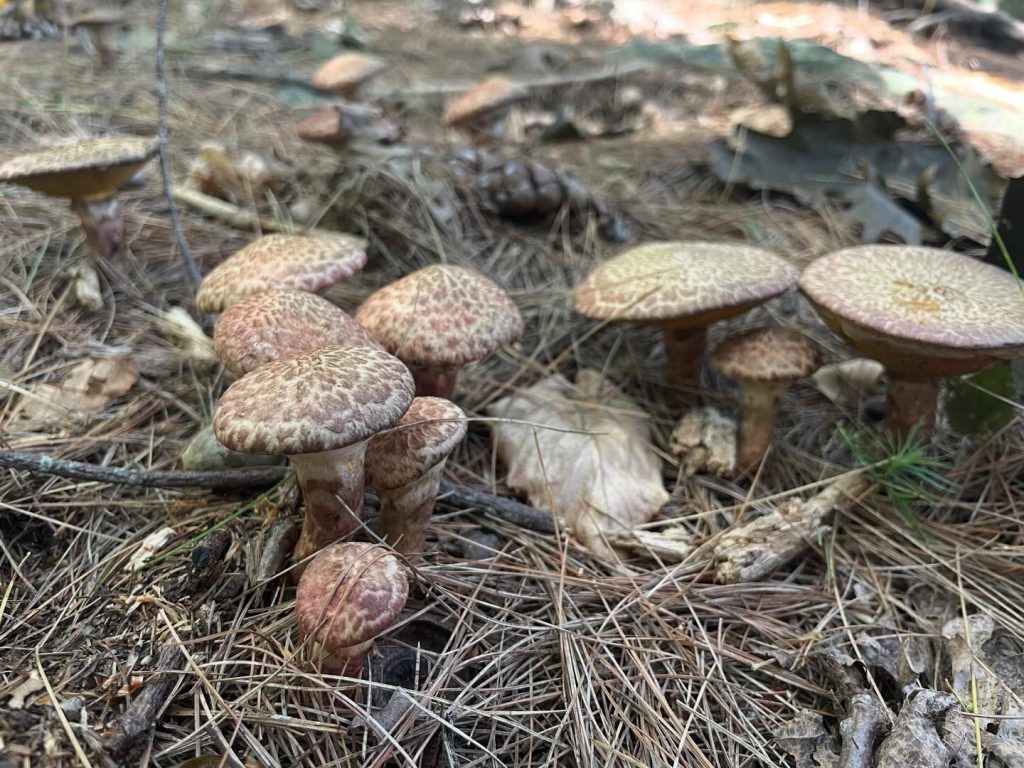
The Painted Suillus (Suillus spraguei) is an edible mushroom that can be found in conifer forests from June-October. The mushroom grows scattered or clustered in the ground. It is a mycorrhizal mushroom that often associates with pine. The Painted Suillus has a unique scaly red cap and stem. The yellow pores are covered by a […]
Tylopilus ferrugineus
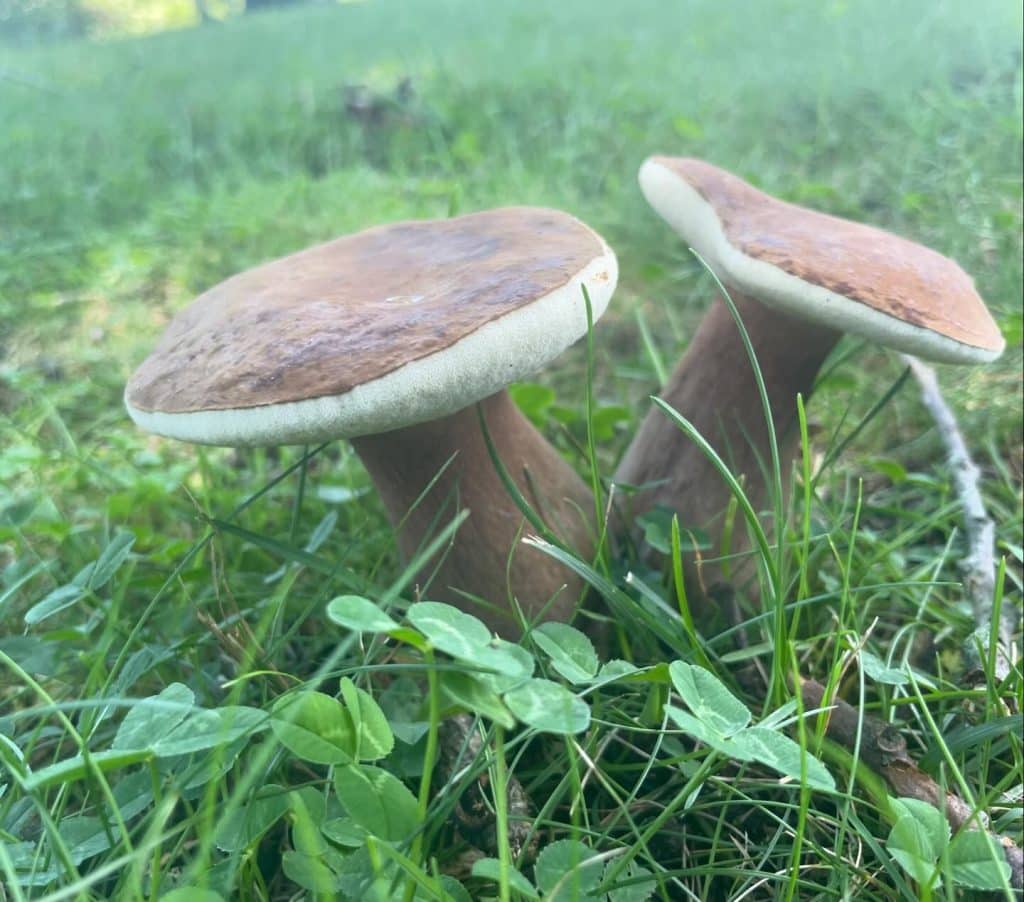
Tylopilus ferrugineus is an edible mushroom that is native to eastern North America. It fruits July-September. The mushroom is often found in grassy areas in association with oak or beech. The cap and stem are brown. The pores are white and stain brown. Young mushrooms have club-shaped stems and very firm flesh. Spore print is […]
Xerocomus illudens

Xerocomus illudens is an edible bolete that fruits July-October. It forms mycorrhizal relationships with oaks and possibly other hardwoods. The cap is cinnamon-brown or pinkish-cinnamon colored. The pores are lemon yellow and angular. The flesh is pale yellow and does not stain blue. The stem is mustard-yellow and has a course net. Spore print is […]
Baorangia bicolor – Bicolor Bolete
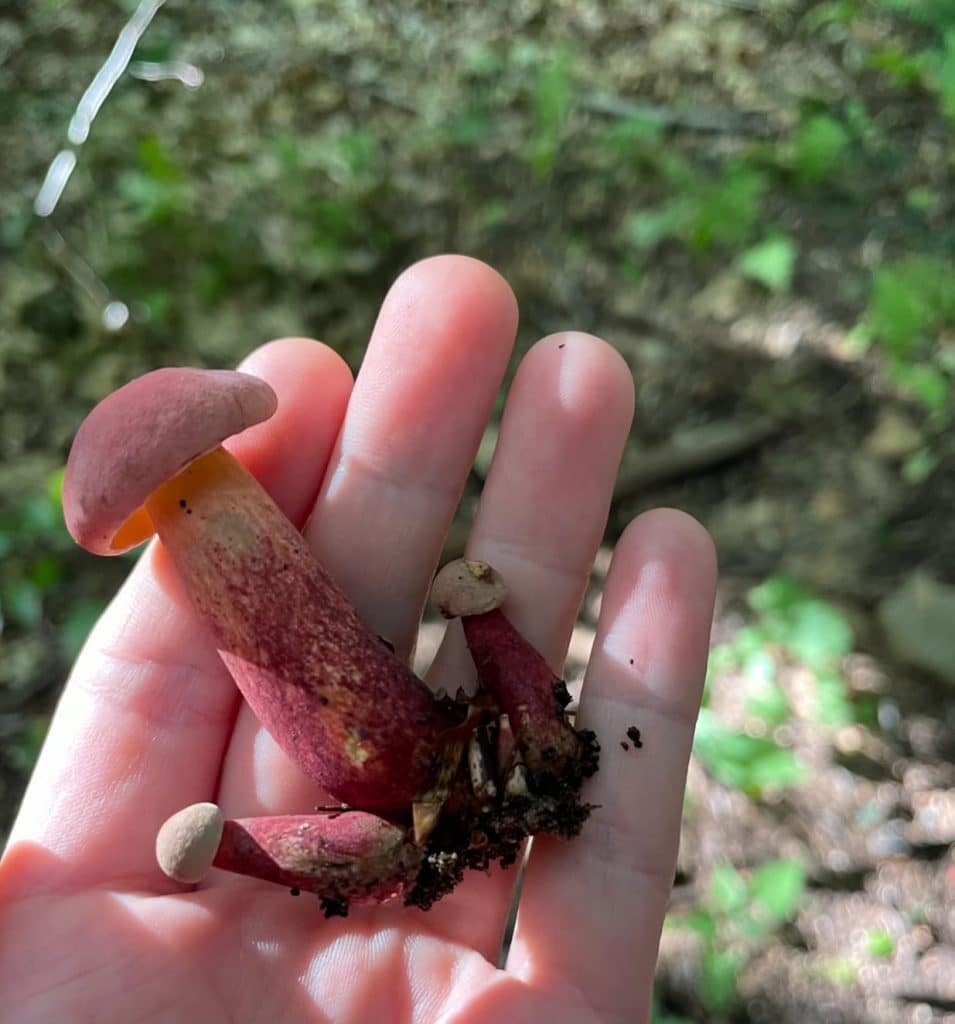
Bicolor Bolete (Baorangia bicolor) is an edible mushroom that can be found from June-October. It has a mycorrhizal relationship with oak and other hardwood trees. Bicolor boletes grow in the ground scattered or in small clusters. The cap is pinkish to dark red. Occasionally young mushrooms will have a yellow cap. The pore surface is […]
Phylloporus rhodoxanthus – Gilled Bolete
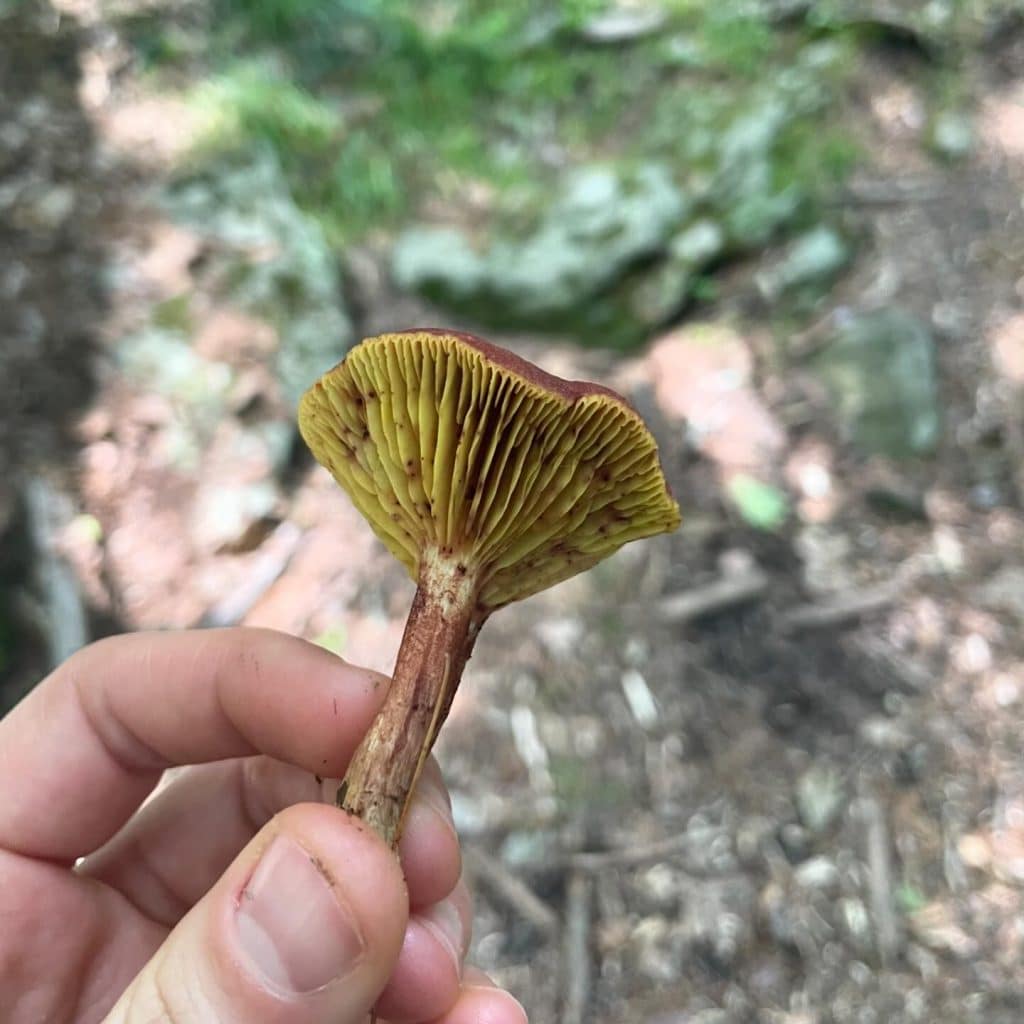
The Gilled Bolete (Phylloporus rhodoxanthus) is an edible mushroom that can be found June-October. It is mycorrhizal with beech and oak. Phylloporus rhodoxanthus is the most common gilled bolete mushroom in North America. There are 6+ species of gilled boletes in North America. The gilled boletes have a bolete-like shape with a thick cap and […]
Boletus separans – Lilac Bolete
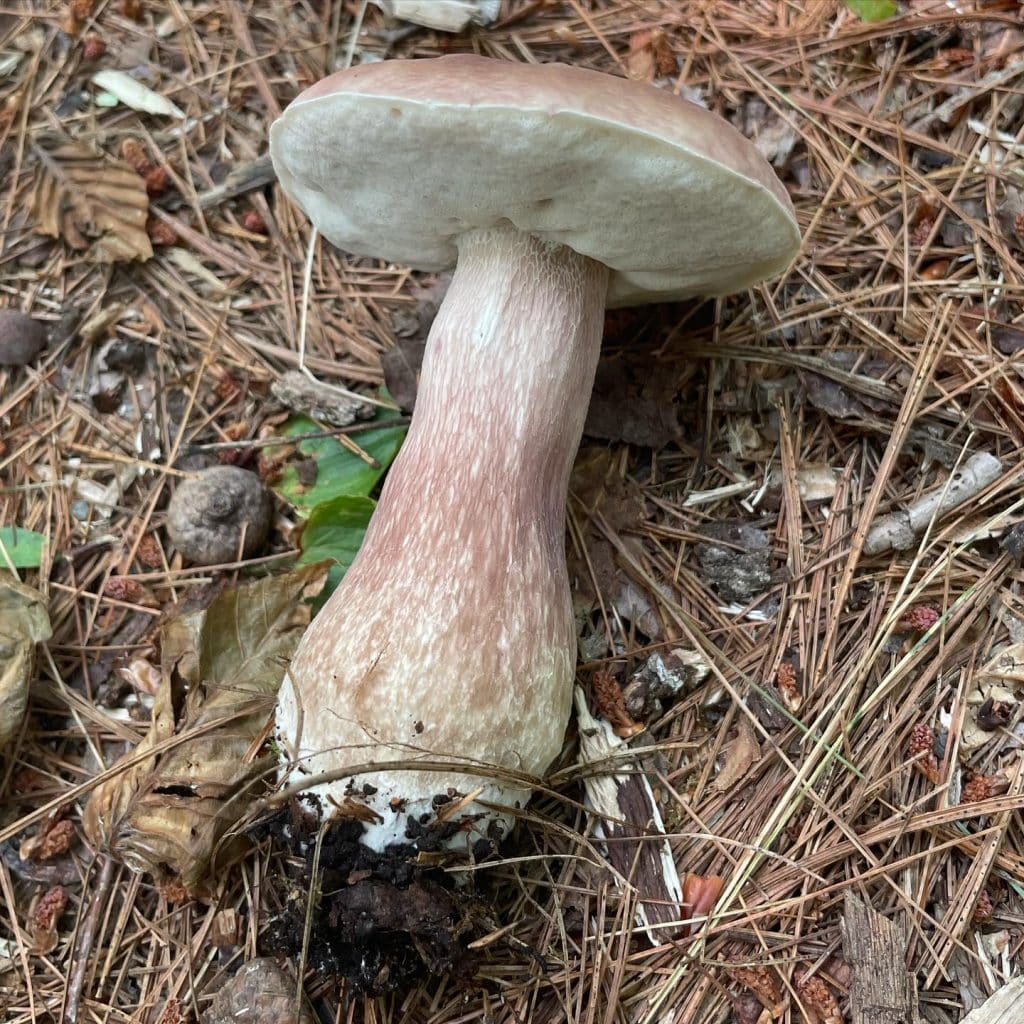
The Lilac Bolete (Boletus separans) is a choice edible mushroom related to the King Bolete (Boletus edulis). Lilac boletes can be found in eastern North America from July-September. They have a mycorrhizal relationship with hardwood trees, especially red oaks. Lilac boletes can be identified by their purplish stalk with white reticulation (netting). Cap color varies […]
Gyroporus castaneus – Chestnut Bolete

The Chestnut Bolete (Gyroporus castaneus) is an edible mushroom that can be found fruiting summer to fall. The chestnut bolete can be found in Europe and eastern North America. It grows singly or in small groups near hardwood trees, often oak and sweet chestnut. It is unclear if the mushroom has a mycorrhizal or saprobic […]
Tylopilus alboater – Black Velvet Bolete
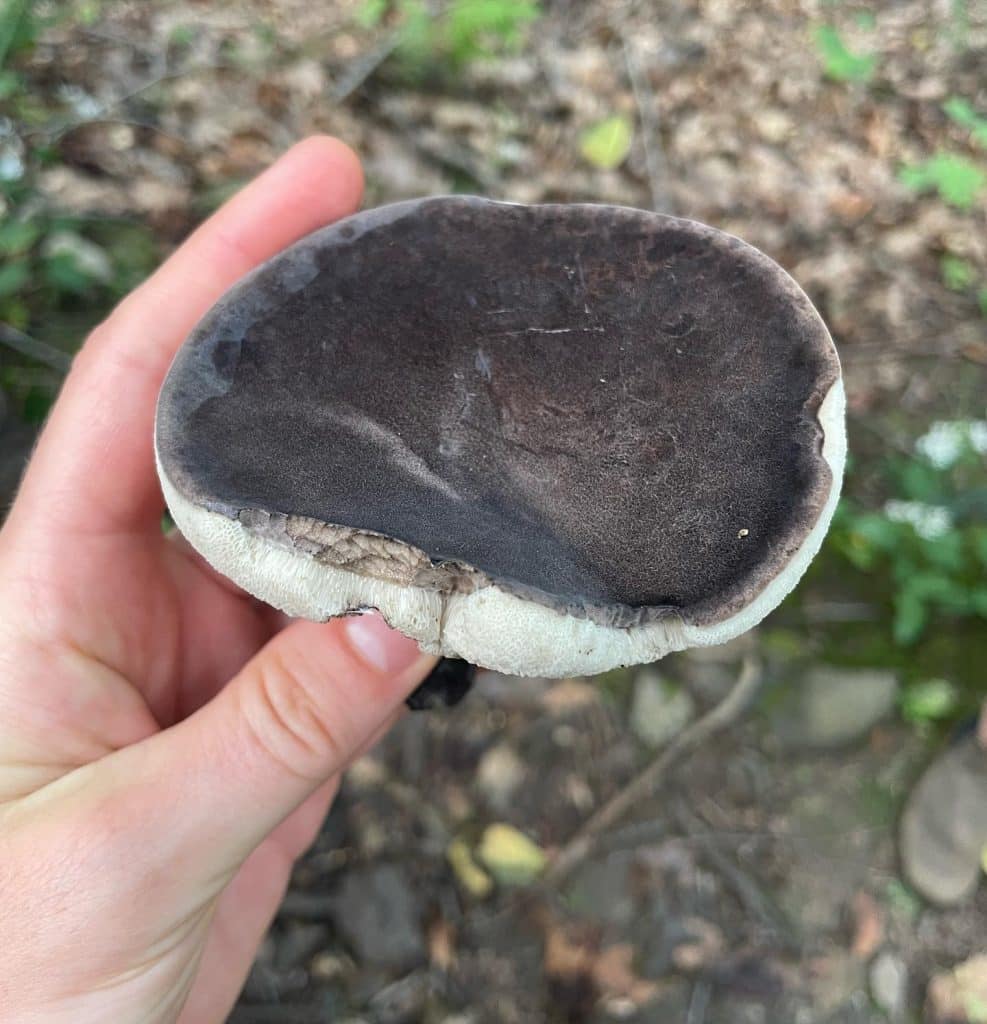
The Black Velvet Bolete (Tylopilus alboater) is an easy-to-identify choice edible mushroom. The mushroom can be found east of the Rocky Mountains and in Eastern Asia. It is mycorrhizal with deciduous trees, particularly oaks. In Connecticut, the mushroom can be found June-October. The black velvet bolete has a dry cap that looks and feels like […]
Leccinum longicurvipes – Curved-stalk Bolete
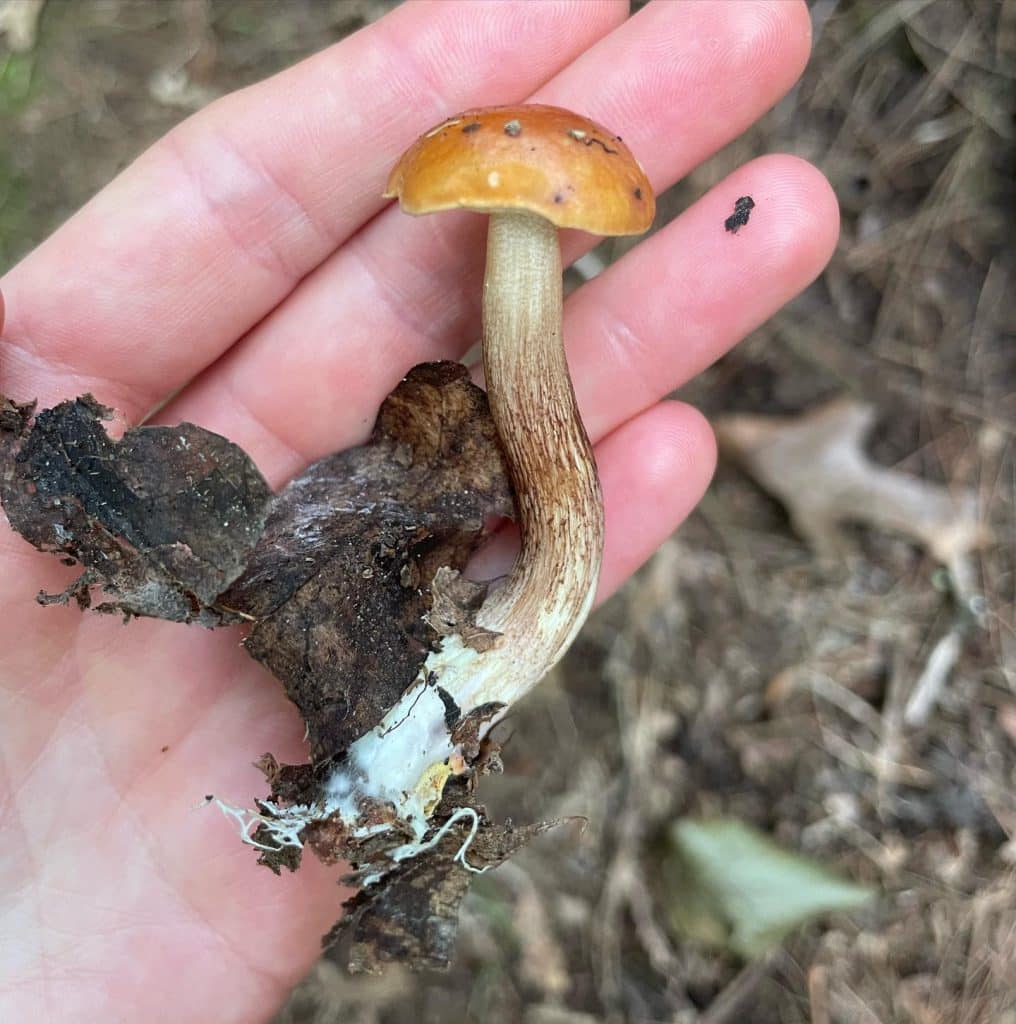
The Curved-stalk Bolete (Leccinum longicurvipes) is an edible mushroom that can be found in oak forests from July-September. The curved-stalk bolete almost always has a curved stalk. There are pinkish brown scabers, or dark markings, on its stalk. The mushroom has a moist orangish-brown cap. The pore surface is yellowish and doesn’t stain blue. Spore […]
